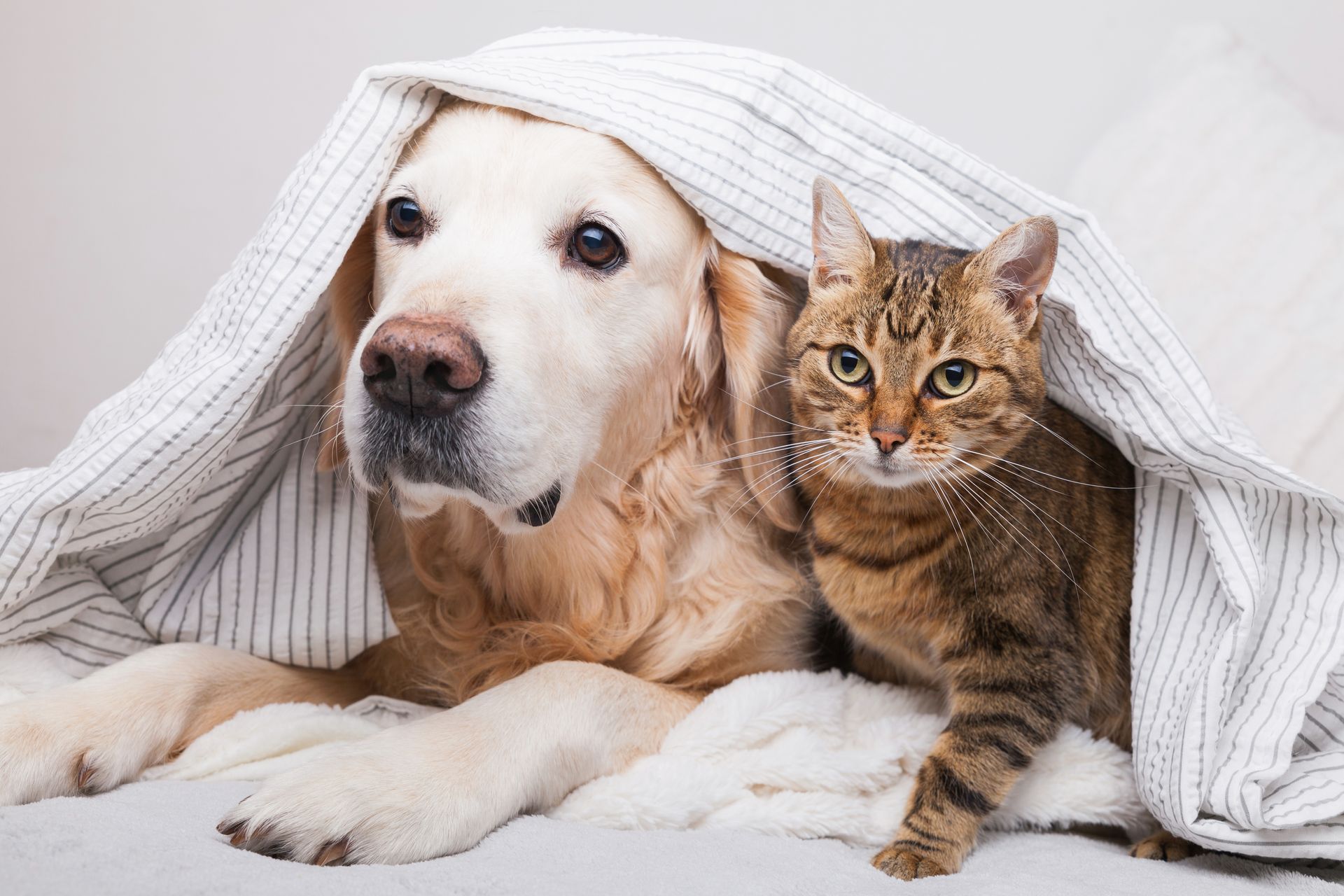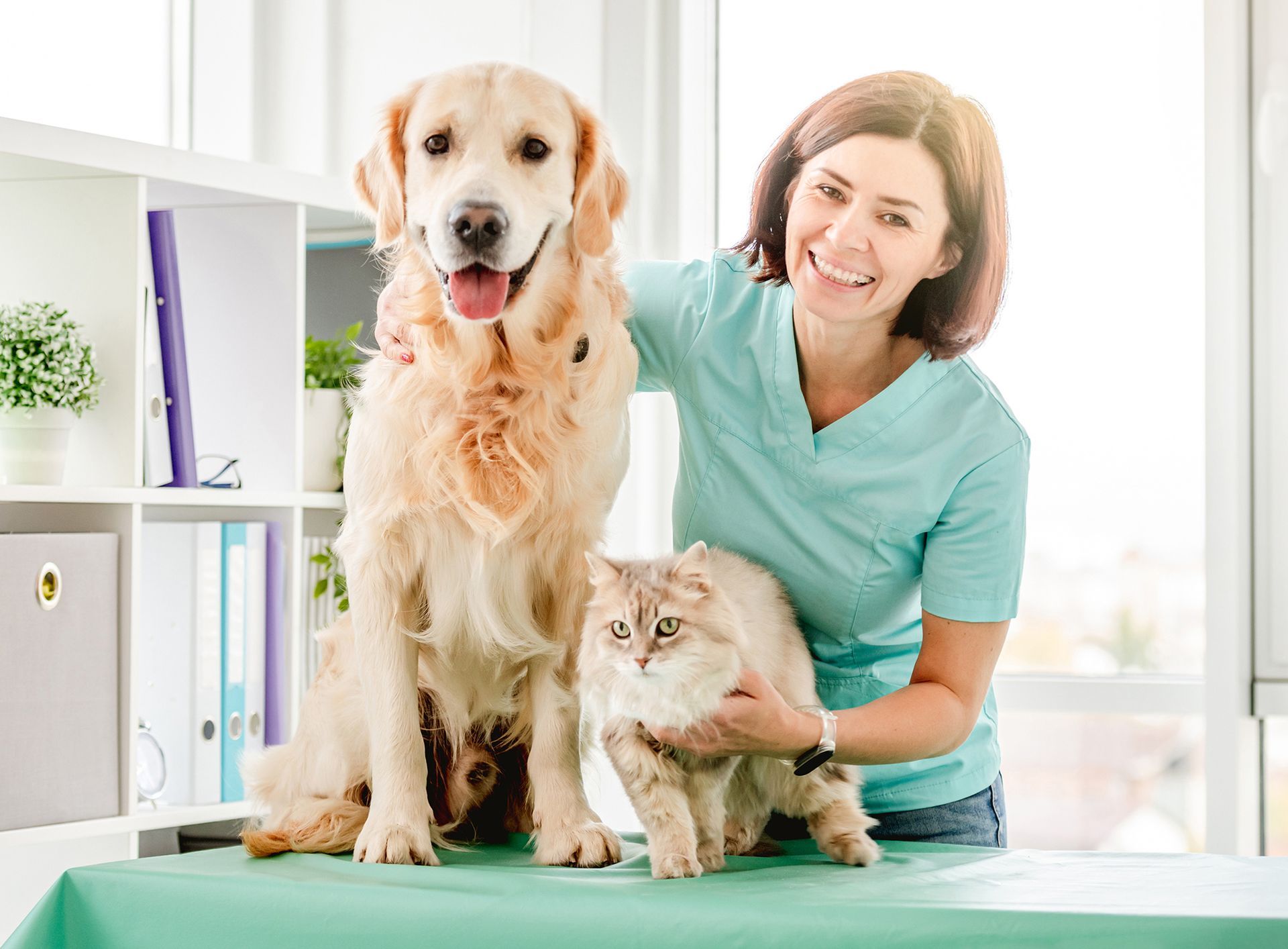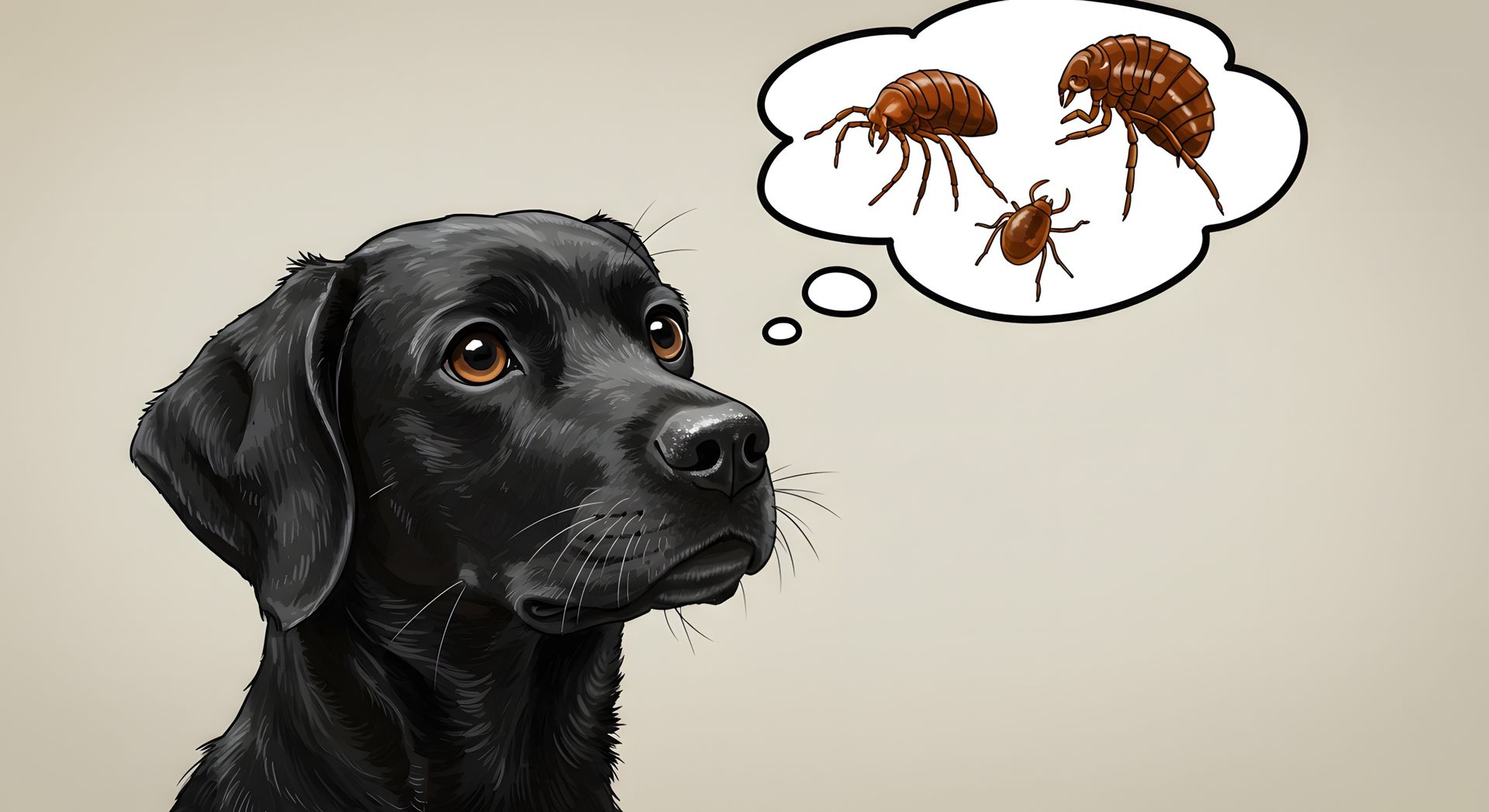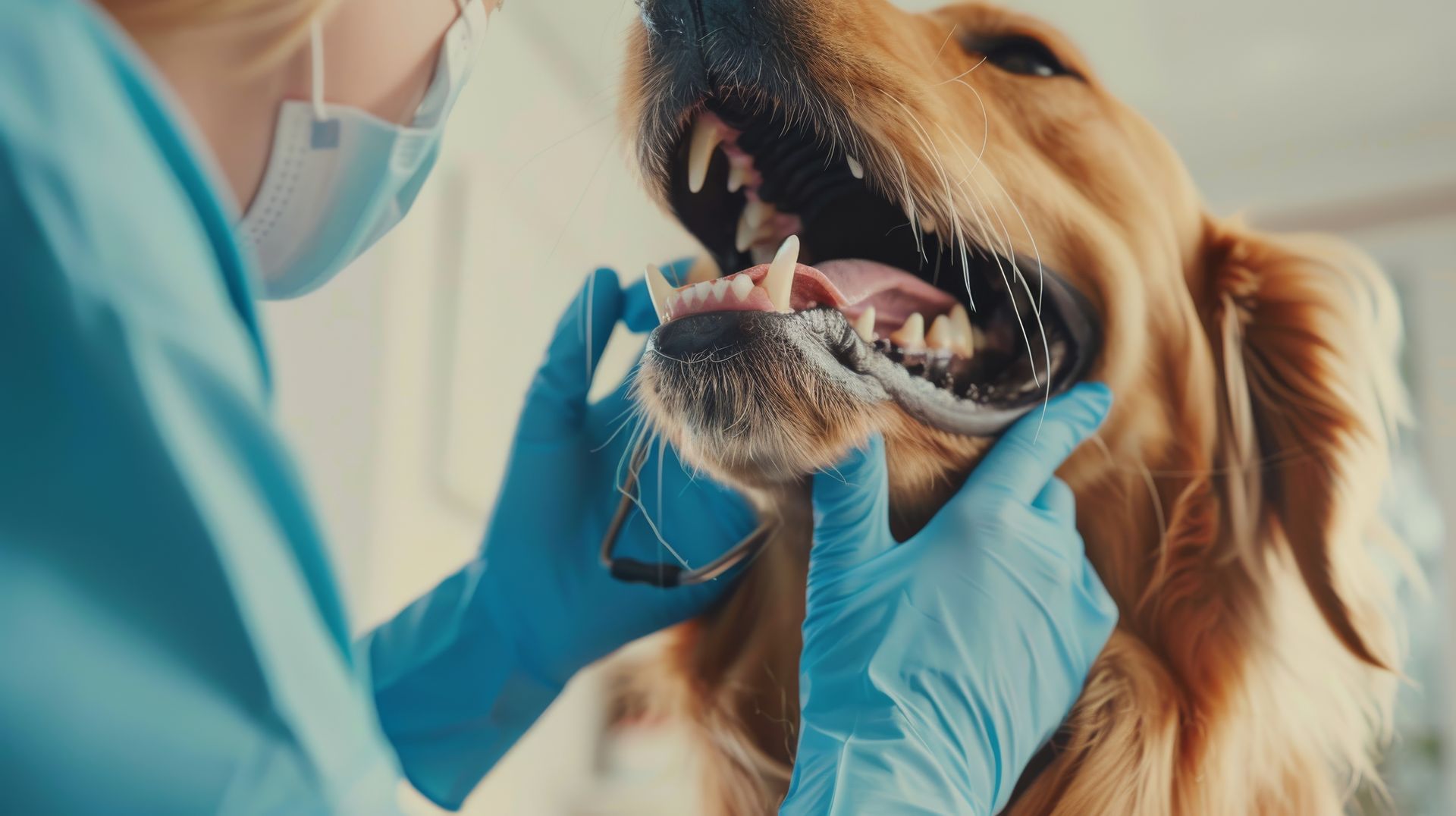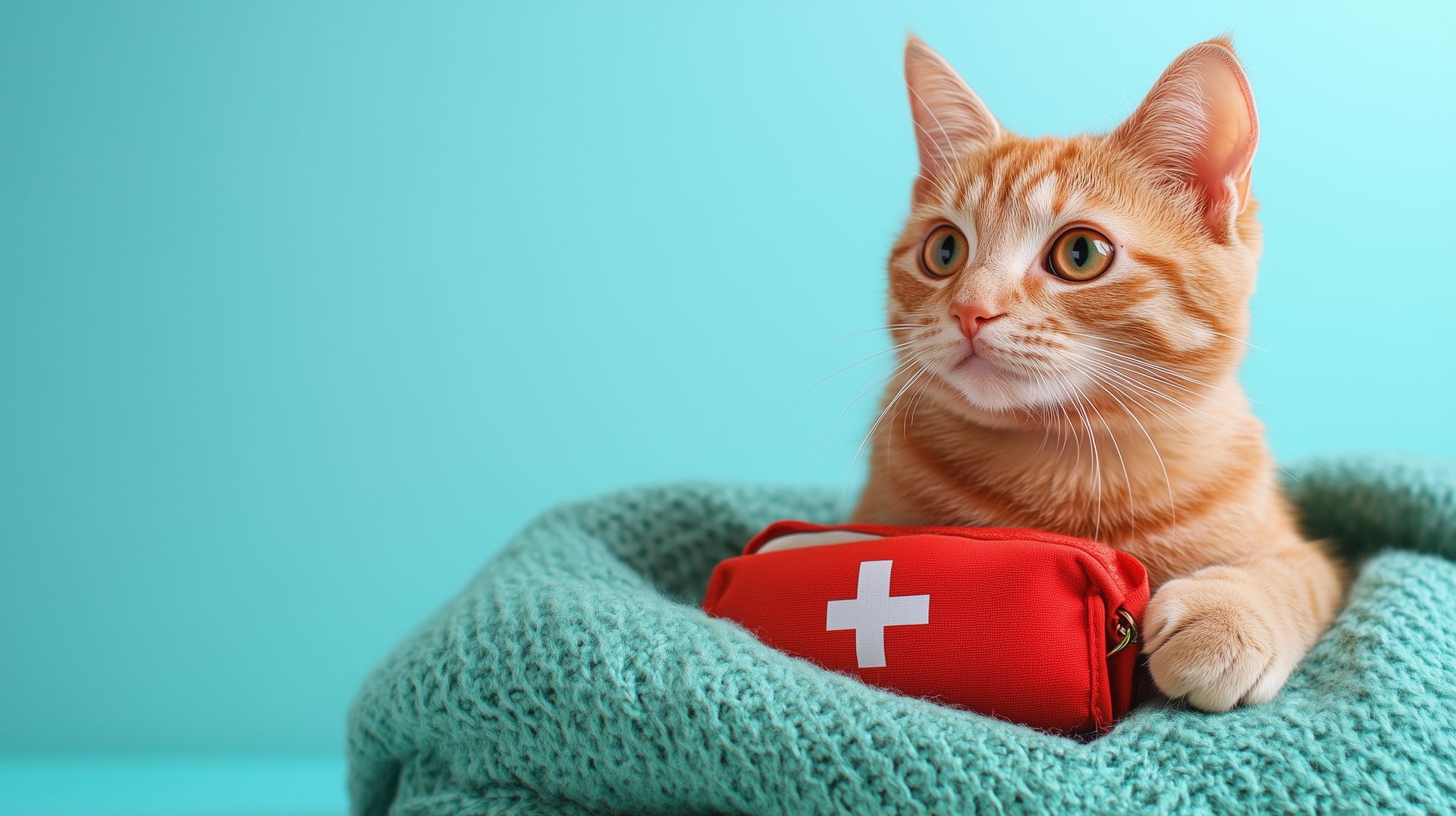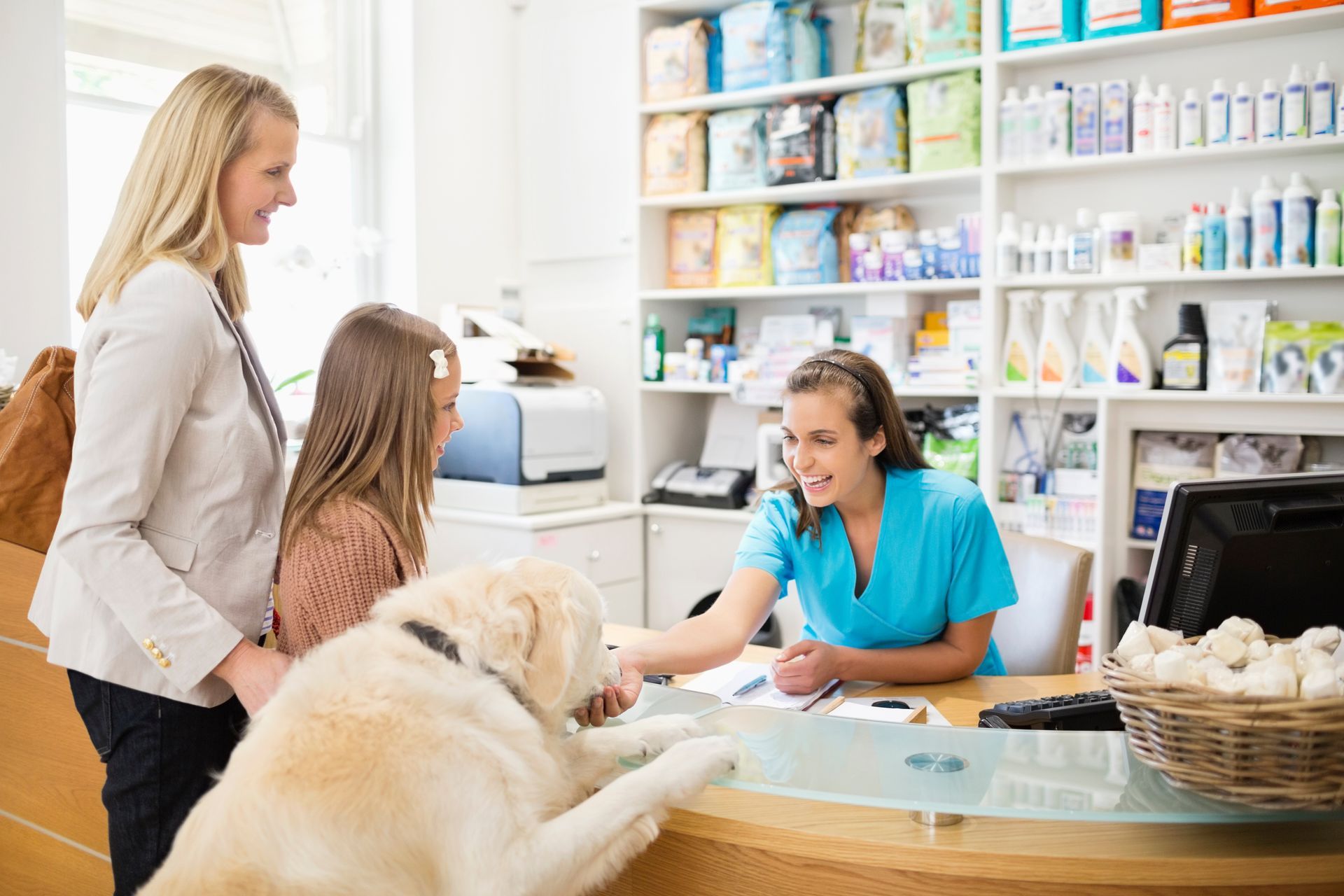Panic Mode: What to Do When Your Pet Swallows Something They Shouldn't
Key Points
- Time is critical when pets ingest foreign objects or toxins—minutes can make the difference
- Never induce vomiting at home without veterinary guidance—some substances cause more damage coming back up
- Common household items like chocolate, xylitol, grapes, and certain plants can be deadly to pets
- Obstruction symptoms include vomiting, loss of appetite, lethargy, and abdominal pain
- What you do in the first 30 minutes significantly affects outcomes
- Some ingestions require immediate emergency care; others need watchful monitoring
- Prevention is exponentially easier than treatment—pet-proof your home like you would for a toddler
- Keep your veterinarian's number and nearest emergency clinic information easily accessible
You're cooking dinner when you hear that sound—the one every pet owner dreads. Your dog is crunching something that definitely isn't their kibble. You rush over to find your favorite tube of hand cream demolished, your cat licking their chops nearby. Or maybe you come home to find the trash scattered across the kitchen, an empty chocolate bar wrapper in the middle of the chaos, and your dog looking simultaneously guilty and pleased with themselves.
Your heart starts racing. Your mind floods with questions: What exactly did they eat? How much? How long ago? Should I rush to the vet right now? Can I make them throw up? Will they be okay?
Here's the reality: pets eating foreign objects is one of the most common veterinary emergencies. Dogs and cats are curious creatures with impressive abilities to find and consume things that were never meant to be food. From the genuinely toxic (chocolate, xylitol, antifreeze) to the mechanically dangerous (socks, corn cobs, string), our pets have an uncanny talent for ingesting exactly the wrong things.
The good news? Knowing what to do in those critical first minutes can literally save your pet's life. The bad news? Well-meaning but incorrect responses can sometimes make things worse. Let's walk through exactly what you need to know when your pet becomes a four-legged vacuum cleaner for household hazards.
The First 5 Minutes: Stay Calm, Act Fast
When you discover your pet ate something dangerous, your immediate response sets the stage for everything that follows.
Step 1: Assess the Situation Quickly
Identify What Was Consumed:
- Look for packaging, wrappers, or containers
- Check for tooth marks, spills, or scattered items
- Note product names, active ingredients, and amounts if possible
- Take photos of packaging—you'll need this information
Estimate the Amount:
- How much is missing from the container?
- Are there multiple pets? Could another have eaten some?
- When was the product last full or unopened?
Determine When It Happened:
- Did you witness the ingestion?
- How long has the pet been alone with access to the item?
- Are there clues about timing (fresh vomit, recently chewed packaging)?
Observe Your Pet's Current State:
- Are they acting normally or showing symptoms?
- Breathing normally?
- Alert and responsive?
- Any visible distress?
Step 2: Contact Your Veterinarian Immediately
Don't wait to see if symptoms develop. Many toxic substances and foreign objects cause problems that worsen rapidly. Call your vet or emergency clinic right away with:
- What was ingested (be specific: "dark chocolate" not just "chocolate")
- Approximate amount consumed
- Your pet's weight
- Time of ingestion (exact or estimated)
- Current symptoms or behaviors
For Castle Hills Veterinary patients: Call (469) 962-2060 immediately. If outside regular hours, call our emergency line or the nearest 24-hour emergency clinic.
Have This Information Ready:
- Product packaging or ingredient list
- Your pet's medical history
- Current medications
- Any known allergies
Step 3: Follow Professional Guidance Exactly
The veterinary team will assess the situation and provide specific instructions:
They may tell you to:
- Bring your pet in immediately
- Induce vomiting at home (they'll tell you exactly how)
- Monitor specific symptoms and call back if they develop
- Give activated charcoal (they'll provide this)
- Keep your pet calm and restrict activity
DO NOT:
- Induce vomiting without veterinary instruction
- Wait to see if symptoms develop with known toxins
- Attempt home remedies you found online
- Give human medications unless specifically instructed
Common Household Hazards: Know Your Enemy
Understanding common pet toxins helps you react appropriately to different ingestions.
Foods That Are Toxic to Pets
Chocolate:
- Why it's dangerous: Contains theobromine and caffeine, which pets metabolize slowly
- Severity: Dark chocolate and baking chocolate are most dangerous; milk chocolate less so, but still concerning
- Toxic dose: Varies by chocolate type and pet size; any amount warrants veterinary consultation
- Symptoms: Vomiting, diarrhea, rapid heart rate, tremors, seizures
- Action required: Immediate veterinary contact; time-sensitive for induced vomiting
Xylitol (Artificial Sweetener):
- Why it's dangerous: Causes severe hypoglycemia and liver failure in dogs
- Common sources: Sugar-free gum, candy, baked goods, peanut butter, medications
- Toxic dose: Even tiny amounts can be deadly
- Symptoms: Weakness, collapse, seizures, vomiting
- Action required: EMERGENCY—every minute counts
Grapes and Raisins:
- Why it's dangerous: Cause kidney failure in dogs (mechanism unknown)
- Severity: Can be fatal; individual sensitivity varies
- Toxic dose: Unknown—even small amounts can cause problems
- Symptoms: Vomiting, diarrhea, lethargy, decreased urination
- Action required: Immediate veterinary contact
Onions and Garlic:
- Why it's dangerous: Damage red blood cells, causing anemia
- Common sources: Cooking ingredients, baby food, seasonings
- Toxic dose: Concentrated forms (powder, supplements) most dangerous
- Symptoms: Weakness, pale gums, red or brown urine (develops over days)
- Action required: Veterinary consultation; may not be immediately life-threatening but requires treatment
Macadamia Nuts:
- Why it's dangerous: Causes weakness and neurological symptoms in dogs
- Severity: Usually not fatal but very uncomfortable
- Toxic dose: 2-4 nuts can cause symptoms in small dogs
- Symptoms: Weakness in rear legs, tremors, fever, vomiting
- Action required: Veterinary consultation; supportive care usually sufficient
Medications and Chemicals
Human Medications:
- Common culprits: Ibuprofen, acetaminophen, antidepressants, ADHD medications, blood pressure pills
- Why dangerous: Even small doses can cause organ failure, bleeding, neurological damage
- Action required: EMERGENCY for most human medications
Rodenticides (Rat/Mouse Poison):
- Types vary: Different active ingredients cause different problems (bleeding, neurological issues, kidney failure)
- Why dangerous: Designed to kill mammals; equally dangerous to pets
- Action required: EMERGENCY—treatment differs by poison type; bring packaging
Antifreeze (Ethylene Glycol):
- Why it's dangerous: Tastes sweet, causes rapid kidney failure
- Window for treatment: Very narrow; must act within hours
- Symptoms: Initially appear "drunk," then progress to kidney failure
- Action required: EXTREME EMERGENCY
Household Cleaners:
- Variety: Bleach, detergents, drain cleaners, toilet bowl cleaners
- Dangers: Chemical burns, respiratory issues, organ damage
- Action required: Immediate veterinary consultation; do NOT induce vomiting with caustic substances
Plants and Garden Products
Toxic Plants:
- Lilies: Extremely toxic to cats; all parts cause kidney failure
- Sago Palms: Cause liver failure in dogs
- Azaleas/Rhododendrons: Affect heart and digestive system
- Tulip/Daffodil bulbs: Cause severe GI upset and heart issues
- Oleander: Affects heart function
- Marijuana/Cannabis: Causes neurological symptoms; toxic to pets
Fertilizers and Pesticides:
- Fertilizers: Cause GI upset; some contain toxic additives
- Insecticides: Neurological effects, tremors, seizures
- Slug/Snail bait (Metaldehyde): Causes severe seizures
- Action required: Bring product packaging; treatment varies by type
Non-Toxic but Mechanically Dangerous Objects
Fabric Items:
- Examples: Socks, underwear, towels, bedding
- Danger: Intestinal obstruction, especially in "linear" items
- Symptoms: Vomiting, loss of appetite, abdominal pain
- Action required: Veterinary evaluation; may pass or require surgery
String, Ribbon, Thread:
- Especially dangerous: Can "saw" through intestines
- Common with cats: Cats love playing with string
- Warning sign: String visible under tongue or from rectum (DO NOT PULL)
- Action required: EMERGENCY—never pull string from either end
Bones and Corn Cobs:
- Why dangerous: Cannot be digested; cause obstructions
- Bones: Splinter risk, perforation danger
- Corn cobs: Perfect size to lodge in intestines
- Action required: Veterinary evaluation
Toys and Balls:
- Problem: Pets chew off pieces and swallow them
- Risk factors: Size appropriate for mouth but not for swallowing
- Symptoms: Same as other obstructions
- Action required: Depends on size and material
When It's an Emergency: Red Flags
Some situations demand immediate emergency veterinary care without question:
Rush to Emergency Vet If Your Pet:
Shows Severe Symptoms:
- Difficulty breathing or gasping
- Seizures or tremors
- Collapse or inability to stand
- Pale or blue gums
- Severe vomiting or diarrhea (especially with blood)
- Distended or painful abdomen
- Loss of consciousness
Ingested Known Toxins:
- Any amount of xylitol
- Antifreeze
- Rat poison
- Human medications (especially pain relievers, antidepressants, ADHD meds)
- Concentrated onions/garlic (supplements, powder)
- Lilies (if you have a cat)
Swallowed Dangerous Objects:
- Anything string-like (thread, ribbon, dental floss, tinsel)
- Batteries
- Sharp objects (needles, fish hooks, broken glass)
- Objects you know are too large to pass (corn cobs, large bones, balls)
Time-Sensitive Situations:
- Ingestion occurred within the last 1-2 hours (induced vomiting may be option)
- Chocolate ingestion in dogs
- Any known toxin exposure
Monitor Closely and Call Vet If:
Pet Ate:
- Small amount of potentially toxic food (grapes, chocolate) but isn't showing symptoms yet
- Non-toxic foreign object that might pass
- Unknown substance but acting normally
Watch For These Symptoms:
- Decreased appetite
- Lethargy
- Vomiting (especially if progressive)
- Diarrhea
- Behavioral changes
- Unsuccessful attempts to vomit or defecate
Don't wait for symptoms to worsen—call even if you're uncertain.
Critical Mistakes to Avoid
What NOT to do when your pet ate something is just as important as what to do:
NEVER Induce Vomiting Without Veterinary Guidance
Why this is dangerous:
- Caustic substances (cleaners, batteries) cause more damage coming back up
- Sharp objects can lacerate the esophagus when vomited
- Petroleum products can be aspirated into lungs
- Timing matters—vomiting is only effective within 1-2 hours of ingestion
- Incorrect technique can cause aspiration pneumonia
Only induce vomiting when:
- Your veterinarian specifically instructs you to
- They provide exact dosing for hydrogen peroxide (the only safe home method)
- Your pet is alert and able to swallow
Don't Wait and See With Known Toxins
The "wait and see" approach fails with:
- Substances that cause delayed symptoms (antifreeze, some rodenticides, xylitol)
- Toxins where early intervention is critical
- Situations where decontamination is time-sensitive
Waiting eliminates treatment options:
- Can't induce vomiting after 2 hours (substance already absorbed)
- Can't administer activated charcoal effectively once toxin is absorbed
- Organ damage may already be occurring
Don't Give Anything by Mouth
Avoid giving:
- Milk (doesn't neutralize most toxins; may speed absorption)
- Food (delays vomiting if that's recommended)
- Human medications
- Home remedies from internet
- Anything unless specifically instructed by veterinarian
Exception: Your vet may instruct you to give specific substances like bread, canned pumpkin, or hydrogen peroxide—but only follow their exact instructions.
Don't Pull String or Ribbon
If you see string coming from either end of your pet:
- DO NOT PULL—it can saw through intestines
- Cut it short if hanging from mouth (leave the rest)
- Get to vet immediately
- Keep pet calm and still
Don't Assume "Natural" Means Safe
Common misconceptions:
- Essential oils can be toxic to pets
- Many plants are poisonous
- "Organic" rodenticides are still deadly
- Natural sweeteners (xylitol, stevia) can be harmful
Don't Delay Because It's After Hours
Emergency situations don't wait for business hours:
- Have 24-hour emergency clinic information ready
- Cost shouldn't prevent emergency treatment (discuss payment plans)
- The sooner treatment begins, the better the outcome and often lower the cost
What Your Vet Will Do
Understanding veterinary treatment for ingestion helps you know what to expect:
Initial Assessment
Physical Examination:
- Vital signs (temperature, heart rate, breathing)
- Abdominal palpation
- Gum color and capillary refill time
- Neurological status
- Overall appearance and behavior
History Taking:
- Detailed questions about what, when, and how much
- Review of symptoms and timeline
- Medical history review
Decontamination (If Appropriate)
Induced Vomiting:
- Given if ingestion was recent (usually <2 hours)
- Uses injectable medication (safer than home methods)
- Not done if: pet is lethargic, substance is caustic, object is sharp
Activated Charcoal:
- Binds toxins in GI tract to prevent absorption
- Most effective when given early
- May be given in multiple doses
Gastric Lavage (Stomach Pumping):
- Reserved for specific situations
- Requires sedation or anesthesia
- Used when vomiting is contraindicated but decontamination needed
Diagnostic Testing
Bloodwork:
- Baseline organ function
- Specific toxin levels when available
- Monitoring for effects (anemia, clotting issues)
Imaging:
- X-rays to identify foreign objects
- Ultrasound for soft tissue evaluation
- Contrast studies to assess obstruction
Urinalysis:
- Kidney function assessment
- Detection of certain toxins
Treatment
Supportive Care:
- IV fluids for hydration and toxin elimination
- Anti-nausea medications
- Pain management
- GI protectants
Specific Antidotes:
- Vitamin K for some rodenticides
- Ethanol or fomepizole for antifreeze
- N-acetylcysteine for acetaminophen
Surgical Intervention:
- Foreign body removal if obstruction confirmed
- Emergency surgery if perforation suspected
Monitoring:
- Hospitalization for observation
- Serial bloodwork to track organ function
- Continued supportive care until stable
Prevention: Pet-Proofing Your Home
Preventing pet ingestion is infinitely easier than treating it:
Kitchen and Dining Areas
Secure Food:
- Keep all human food out of reach
- Use pet-proof trash cans with locking lids
- Clean up spills immediately
- Don't leave food unattended on counters or tables
Store Dangers Safely:
- Keep chocolate, xylitol products in closed cabinets
- Store medications in secure locations
- Keep cleaning products locked away
- Secure compost bins (toxic fermentation products)
Bathrooms and Bedrooms
Medications:
- Never leave pills on counters or nightstands
- Close medicine cabinets securely
- Pick up dropped pills immediately (they can roll under furniture)
- Keep purses and bags out of reach
Personal Items:
- Store dental floss, hair ties, bobby pins
- Keep laundry hampers closed or out of reach
- Secure trash cans
Living Areas
Houseplants:
- Research toxicity before bringing plants home
- Place toxic plants completely out of reach or eliminate them
- Consider pet-safe alternatives
Small Objects:
- Keep children's toys picked up
- Store craft supplies safely
- Secure remote controls, batteries, coins
Garage and Yard
Automotive Products:
- Store antifreeze in locked cabinets
- Clean spills immediately
- Consider pet-safe antifreeze alternatives
Garden Products:
- Lock up fertilizers, pesticides, herbicides
- Keep pets away from recently treated areas
- Avoid toxic plants in landscaping
- Secure compost bins
Rodenticides:
- Use pet-safe pest control methods when possible
- Place bait stations where pets absolutely cannot access
- Consider professional pest control with pet-safe protocols
General Strategies
Supervision:
- Watch pets around new items
- Supervise during parties or gatherings
- Be extra vigilant with puppies and kittens
Training:
- Teach "leave it" and "drop it" commands
- Reward pets for ignoring inappropriate items
- Provide appropriate chew toys and mental stimulation
Regular Inspection:
- Do routine "pet safety sweeps" of your home
- Check for new hazards when you bring home purchases
- Reassess as pets age and behaviors change
What to Watch For After Ingestion
Even if your vet says to monitor at home, know what symptoms of foreign body ingestion to watch for:
Gastrointestinal Signs
Vomiting:
- Single episode may not be concerning
- Repeated vomiting warrants veterinary attention
- Projectile or bloody vomit requires immediate care
Diarrhea:
- Mild diarrhea may occur with diet indiscretion
- Bloody or black diarrhea is concerning
- Persistent diarrhea leads to dehydration
Loss of Appetite:
- Refusing favorite foods
- Decreased interest in treats
- Complete anorexia (especially concerning in cats)
Abdominal Discomfort:
- Hunched posture
- Reluctance to move
- Vocalizing when touched
- Swollen or tense abdomen
Behavioral Changes
Lethargy:
- Sleeping more than usual
- Decreased interest in play
- Weakness or wobbliness
Restlessness:
- Unable to get comfortable
- Pacing or circling
- Excessive panting in dogs
Hiding:
- Seeking isolation (especially cats)
- Staying in unusual locations
- Avoiding interaction
Neurological Signs
Seizures or Tremors:
- Full-body seizures
- Localized twitching
- Muscle tremors
Incoordination:
- Stumbling or falling
- Head tilt
- Circling
Behavioral Abnormalities:
- Confusion or disorientation
- Aggression (unusual for pet)
- Depression or non-responsiveness
When to Return to Vet
Call immediately if you notice:
- Any of the severe symptoms listed above
- Progressive worsening of mild symptoms
- New symptoms developing
- Inability to keep water down
- No bowel movement in 24+ hours
- String or object visible in vomit or stool (don't pull it)
Creating Your Emergency Action Plan
Being prepared reduces panic and saves time during pet emergencies:
Information to Keep Handy
Emergency Contacts:
- Your regular veterinarian: Castle Hills Veterinary (469) 962-2060
- Nearest 24-hour emergency clinic (research now, save number)
- ASPCA Animal Poison Control: (888) 426-4435 ($95 consultation fee)
- Pet Poison Helpline: (855) 764-7661 ($85 consultation fee)
Pet Information:
- Current weight (update every 6 months)
- Medical history summary
- Current medications and doses
- Microchip number
- Any known allergies
Household Inventory:
- List of toxic plants in home
- Medications kept in house (include names, strengths)
- Cleaning products used
- Common hazards specific to your home
Emergency Kit
Keep These Items Accessible:
- Hydrogen peroxide 3% (for induced vomiting—only use if instructed)
- Saline solution for eye flushing
- Gauze and bandages
- Your vet's contact information
- Emergency clinic location and contact
- Pet carrier or leash for transport
Update Regularly:
- Check expiration dates
- Replace used items
- Update contact information
Practice Makes Perfect
Prepare Before Emergency:
- Know the fastest route to emergency clinic
- Have a transportation plan (especially for large dogs)
- Designate who does what if multiple people are home
- Practice staying calm (pets sense our stress)
The Castle Hills Difference
At Castle Hills Veterinary, Dr. Sam Joy and our team understand the panic that sets in when your pet ingests something dangerous. We're here to guide you through these scary moments with:
24/7 Emergency Support: Our emergency line ensures you can reach professional guidance any time, day or night.
Rapid Response: We prioritize ingestion cases because we know time is critical.
Advanced Treatment Options: From decontamination to surgery, we provide comprehensive emergency care.
Clear Communication: We explain what's happening, what to expect, and what you can do to help your pet.
Preventive Education: We help you identify and eliminate hazards specific to your home and pet.
Compassionate Care: We know you're scared and possibly feeling guilty. We're here to help, not judge.
Located in Lewisville, Texas, we serve pets throughout the area with the expertise and equipment needed to handle ingestion emergencies effectively.
FAQs About Pet Ingestion Emergencies
Q: How long does it take for symptoms to appear after ingestion?
A: Time varies by substance. Some toxins (xylitol, antifreeze) can cause symptoms within 30 minutes. Others (grapes, some rodenticides) may take hours to days. Foreign objects may cause immediate choking or develop obstruction symptoms over several days. Never wait for symptoms with known toxins.
Q: Can I induce vomiting with salt water or other home remedies?
A: No. Salt water can cause serious sodium toxicity. The only safe home method is hydrogen peroxide 3%, and only when specifically instructed by your veterinarian. Many substances should never be vomited back up.
Q: How do I know if a foreign object will pass on its own?
A: This depends on object size, shape, material, and your pet's size. Your vet can assess this through examination and imaging. Never assume an object will pass—intestinal obstructions can be fatal.
Q: What if I can't afford emergency treatment?
A: Many veterinary emergency clinics offer payment plans or accept pet health financing (CareCredit, Scratchpay). Don't let cost prevent you from seeking care—discuss options with the clinic. Delayed treatment often becomes more expensive.
Q: Should I try to reach down my dog's throat to remove an object?
A: Only if the object is clearly visible at the very back of the throat and your pet is choking. Otherwise, you risk pushing it further down or being bitten. If your pet is breathing, get to the vet immediately rather than attempting removal.
Q: Are cats and dogs affected differently by toxins?
A: Yes. Some substances are more toxic to one species (xylitol is more dangerous for dogs; lilies are deadly to cats but not dogs). Always specify your pet's species when calling poison control or your vet.
FAQs About Castle Hills Veterinary
Q: Do you handle emergency cases?
A: Yes, ingestion emergencies are among the most time-sensitive cases we treat. Call immediately at (469) 962-2060 for guidance and urgent appointment scheduling.
Q: What should I bring when I come in for an ingestion emergency?
A: Bring product packaging, any remaining substance, your pet's medical records if visiting for the first time, and a list of current medications. Time is critical, so don't delay if you can't find packaging—come anyway.
Q: How quickly can you see my pet in an emergency?
A: We prioritize life-threatening emergencies. When you call about ingestion, we'll assess severity and either see your pet immediately or direct you to the nearest emergency clinic if we're at capacity.
Q: Where are you located?
A: We're located at 964 TX-121, Suite #100, Lewisville, TX 75056, easily accessible from throughout the Lewisville area and surrounding communities.
Q: Do you offer payment plans for emergency treatment?
A: We work with several pet financing companies and can discuss payment options when you arrive. Don't let financial concerns prevent you from seeking life-saving care.
Q: What happens if my pet needs care outside your hours?
A: We provide emergency contact information and work closely with area 24-hour emergency clinics. We'll help coordinate continued care and follow-up.
Time is critical when your pet ingests something dangerous. Don't wait—call Castle Hills Veterinary immediately at
(469) 962-2060. Dr. Sam Joy and our experienced team are here to guide you through these scary moments and provide the emergency care your pet needs. Visit
www.castlehillsvet.com to learn more about our emergency services and save our contact information now—before you need it.

